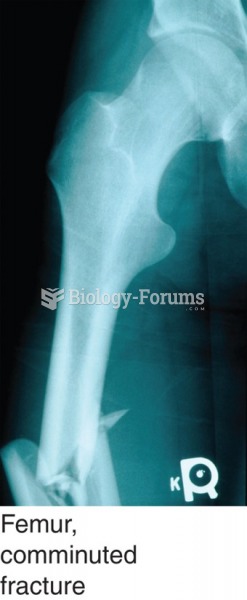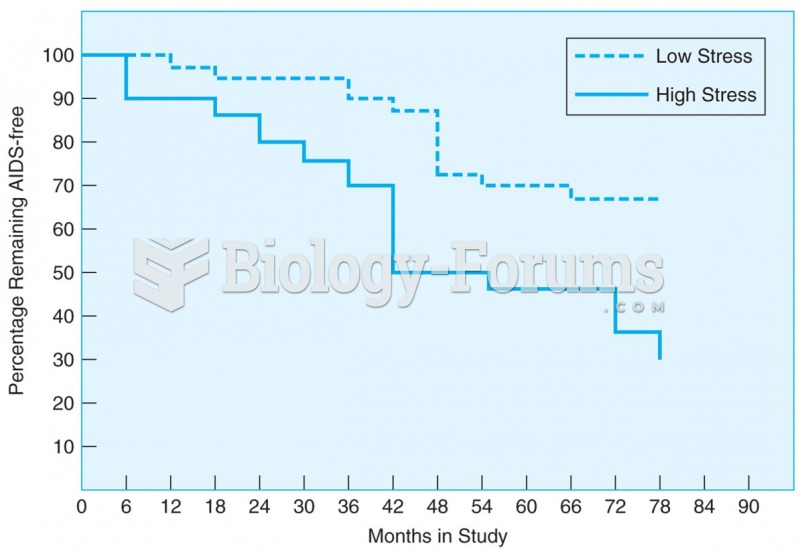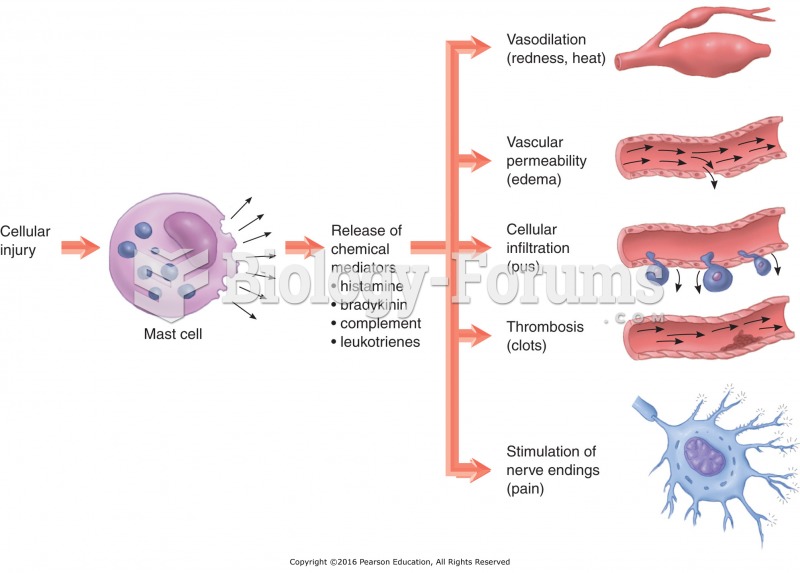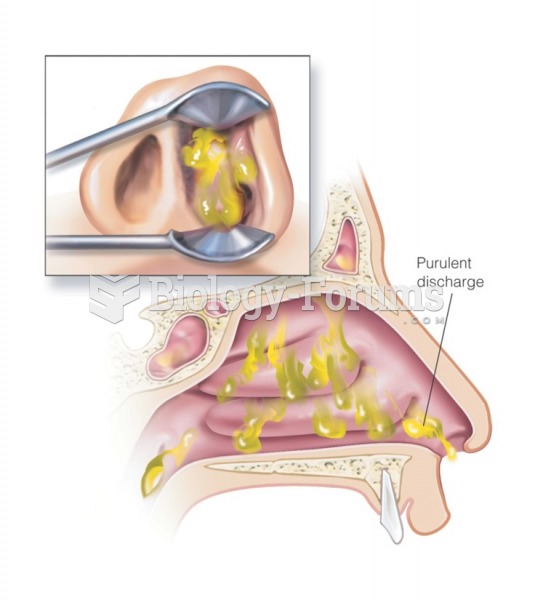|
|
|
About 80% of major fungal systemic infections are due to Candida albicans. Another form, Candida peritonitis, occurs most often in postoperative patients. A rare disease, Candida meningitis, may follow leukemia, kidney transplant, other immunosuppressed factors, or when suffering from Candida septicemia.
The highest suicide rate in the United States is among people ages 65 years and older. Almost 15% of people in this age group commit suicide every year.
The average adult has about 21 square feet of skin.
Aspirin is the most widely used drug in the world. It has even been recognized as such by the Guinness Book of World Records.
As of mid-2016, 18.2 million people were receiving advanced retroviral therapy (ART) worldwide. This represents between 43–50% of the 34–39.8 million people living with HIV.
 A well-folded letter fits easily into the envelope and is easily removed by the person who receives ...
A well-folded letter fits easily into the envelope and is easily removed by the person who receives ...
 Fractures are diagnosed based on an X-ray of the broken bone. Shown here: a comminuted fracture of ...
Fractures are diagnosed based on an X-ray of the broken bone. Shown here: a comminuted fracture of ...





